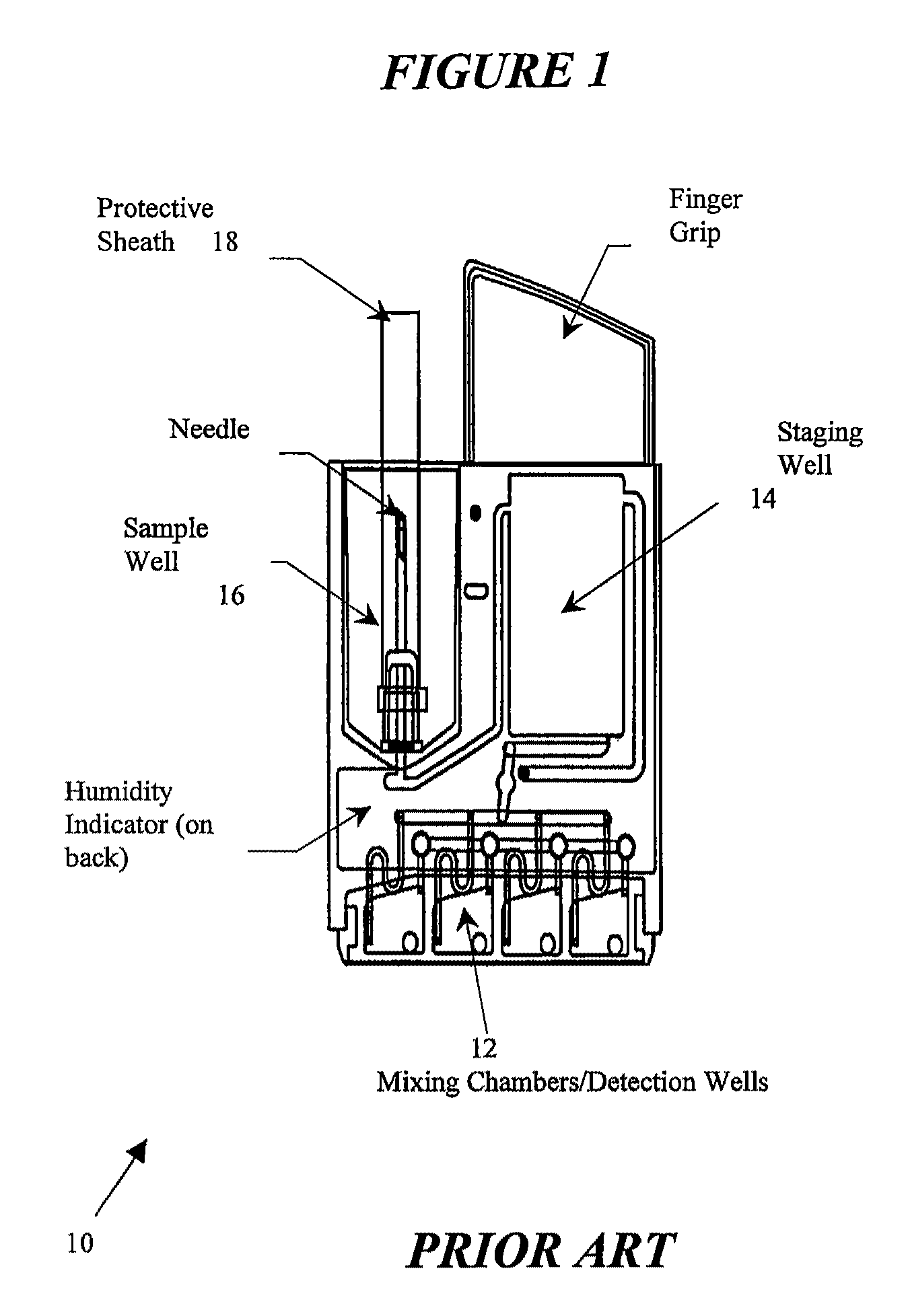Method for determining percent platelet aggregation
a technology of platelet aggregation and aggregation, which is applied in the direction of material analysis, biochemistry apparatus and processes, instruments, etc., can solve the problems of inability to determine the percent of platelet aggregation by a single assay method, inability to meet the requirements of clinical use, and inability to accurately measure the percent of platelet aggregation
- Summary
- Abstract
- Description
- Claims
- Application Information
AI Technical Summary
Benefits of technology
Problems solved by technology
Method used
Image
Examples
example 1
Blood Assay for Determining Blockade of Platelet Receptors
[0031]Blood is drawn from a patient by syringe and placed in a standard blue-top tube containing sodium citrate (1 volume of 3.8% sodium citrate). Alternatively, blood may be drawn by vacutainer directly into a blue-top tube.
[0032]The tube is then inverted to mix the anticoagulant with the whole blood. Then 50 .mu.l of this mixture is added to 50 .mu.l of buffer (0.15M NaCl, 5 mM CaCl.sub.2, 0.05M HEPES, pH 7.4) and to 5 .mu.l. An anti-coagulated sample is introduced simultaneously to the first and second channels of the cartridge.
[0033]If GPIIb / IIIa receptors are blocked, the beads remain in suspension. If the GPIIb / IIIa receptors are not blocked, the platelets interact with the fibrinogen bound to the surface of the beads, resulting in clumping of the beads. A level of platelet aggregation is simultaneously made in both channels by assay device 10.
example 2
Blood Assay for Determining Blockade of Platelet Receptors
[0034]Blood is drawn from a patient by syringe and placed in a standard blue-top tube containing sodium citrate (1 volume of 3.8% sodium citrate). Alternatively, blood may be drawn by vacutainer directly into a blue-top tube.
[0035]The blood sample is introduced in the first and second channels of the cartridge at the same time. The assay device 10 controls the introduction of the blood sample, the mixing of the reagent with the blood sample, the independent optical measurement of aggregation for each active channel, and the determination of the % PI based upon the individual channel results.
[0036]A first plate activator, arachidonic acid, is in the first channel. A second platelet activator, thrombin, is introduced into the second channel of the cartridge. A level of platelet aggregation is simultaneously made in both channels by assay device 10.
example 3
[0037]Blood is drawn from a patient by syringe and placed in a standard blue-top tube containing sodium citrate (1 volume of 3.8% sodium citrate). Alternatively, blood may be drawn by vacutainer directly into a blue-top tube.
[0038]The blood sample is introduced in the first and second channels of the cartridge at the same time. The assay device 10 controls the introduction of the blood sample, the mixing of the reagent with the blood sample, the independent optical measurement of aggregation for each active channel, and the determination of the % PI based upon the individual channel results.
[0039]A first platelet activator, ADP, is in the first channel. A second platelet activator, iso-TRAP, is in the second channel. A level of platelet aggregation is simultaneously made in both channels by assay device 10.
PUM
| Property | Measurement | Unit |
|---|---|---|
| pH | aaaaa | aaaaa |
| adhesive functions | aaaaa | aaaaa |
| adhesion | aaaaa | aaaaa |
Abstract
Description
Claims
Application Information
 Login to View More
Login to View More - R&D
- Intellectual Property
- Life Sciences
- Materials
- Tech Scout
- Unparalleled Data Quality
- Higher Quality Content
- 60% Fewer Hallucinations
Browse by: Latest US Patents, China's latest patents, Technical Efficacy Thesaurus, Application Domain, Technology Topic, Popular Technical Reports.
© 2025 PatSnap. All rights reserved.Legal|Privacy policy|Modern Slavery Act Transparency Statement|Sitemap|About US| Contact US: help@patsnap.com

